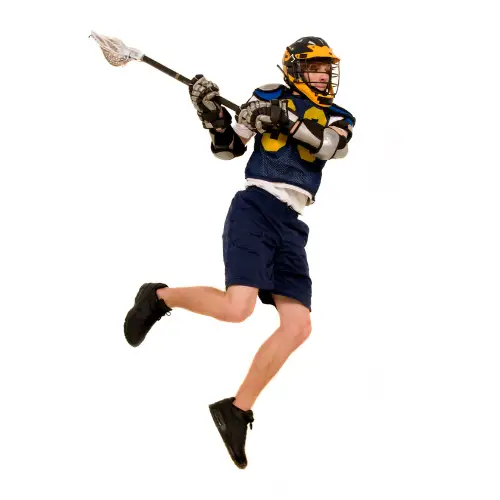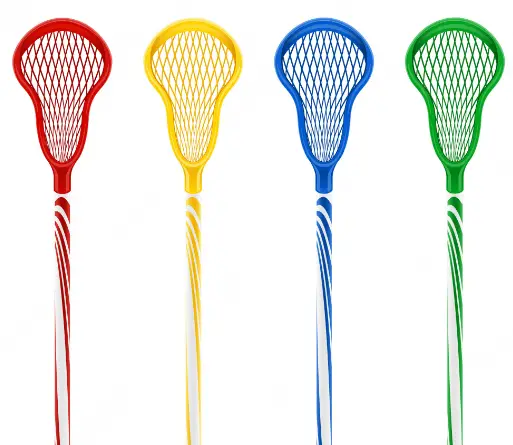If you’re a defensive player in lacrosse, you know just how important having the right stick can be. A well-designed defensive stick can help you make all the plays you need to shut down the opposition and keep them from scoring. But with so many different options on the market, how do you choose the right lacrosse stick for defensemen? In this article, we’ll explore what to look for in a defensive stick and review some of the best options available.
What are the key features of a defensive lacrosse stick?
A defensive lacrosse stick typically has the following key features:
- Length: Defensive sticks are longer than offensive sticks, typically ranging from 52 to 72 inches. This extra length provides defenders with a longer reach, making it easier to intercept passes and check opposing players.
- Head shape: The head of a defensive lacrosse stick is typically wider and flatter than that of an offensive stick. This shape allows defenders to better catch and control the ball, as well as making it easier to deliver powerful checks.
- Shaft material: Defensive sticks are often made of stronger, heavier materials than offensive sticks, such as titanium or scandium. This extra strength helps defenders deliver harder checks without breaking their stick.
- Pocket depth: The pocket on a defensive stick is typically deeper than that on an offensive stick. This extra depth allows defenders to better cradle the ball and prevent opponents from easily knocking it loose.
- Weight: Defensive sticks are often heavier than offensive sticks, as the added weight provides defenders with extra power when delivering checks.
Overall, a defensive lacrosse stick is designed to provide defenders with the ability to intercept passes, control the ball, and deliver powerful checks, while also being strong and durable enough to withstand the physical demands of the game.
Do I need a specific head for defensive play?
Yes, having a specific head for defensive play in lacrosse can be helpful in maximizing your performance on the field. Defensive heads are typically wider and stiffer than offensive heads, which allows for better control when playing defense, as well as more powerful checks.
Some common features of defensive heads include a wider face shape, which makes it easier to scoop up ground balls, and a more angled scoop, which helps with ground ball pickups as well as accurate passes. Additionally, defensive heads tend to have more sidewall stringing holes, which allows for a more customized pocket to fit your individual playing style.
Ultimately, the choice of head will depend on your personal preferences and the specific demands of your position. It’s a good idea to consult with your coach or experienced players on your team to get recommendations for defensive heads that work well for their playing style.
How long should my defensive stick be?
The length of a defensive stick in lacrosse can vary based on personal preference and position played. However, according to the official rules of lacrosse, the maximum length for a defensive stick is 72 inches, while the minimum length is 52 inches.
Many defensive players prefer a stick that is closer to the maximum length of 72 inches, as it provides more reach and allows them to defend against opponents from a greater distance. However, some players may opt for a shorter stick for better control and maneuverability.
Ultimately, the best length for your defensive stick will depend on your personal preference, style of play, and the requirements of your team. It’s always a good idea to try out different lengths during practice and games to see what feels most comfortable and effective for you.
What type of pocket should I choose?
The type of pocket you choose for your lacrosse stick will depend on your personal preferences and playing style. Here are a few things to consider when choosing a pocket:
- Position: Different positions in lacrosse require different types of pockets. For example, attackers may prefer a more narrow pocket to help with ball control and accuracy, while midfielders and defenders may prefer a wider pocket to make catching and throwing easier.
- Playing style: Your playing style may also influence the type of pocket you choose. If you like to cradle the ball a lot, you may want a deeper pocket that will help keep the ball secure. If you like to shoot often, you may want a shallower pocket that allows for a quicker release.
- Mesh type: There are different types of mesh available for lacrosse sticks, including traditional leather and modern synthetic mesh. Each type of mesh has its own advantages and disadvantages, so it’s important to try out different types to see which one you prefer.
- Stringing pattern: The way the pocket is strung can also affect how the ball sits in the pocket and how it releases when you throw. There are many different stringing patterns to choose from, so it’s worth experimenting to find one that works well for you.
Ultimately, the best way to choose a pocket is to try out different options and see what feels most comfortable and effective for you. Don’t be afraid to experiment and make adjustments until you find the perfect pocket for your playing style.
Should I customize my stick?
Customizing your stick can not only help you stand out on the field, but it can also improve your game. Many manufacturers offer the option to customize the colors and graphics on your stick, as well as add personalized text or logos. In addition, you can opt to have your stick strung professionally with a pocket that meets your specific needs. While customization can add extra costs to your stick, it’s worth considering if you’re serious about improving your game.
Conclusion
In conclusion, choosing the right defensive stick comes down to finding a balance between length, head shape, weight, and pocket type that suits your playing style. By prioritizing these features and experimenting with different options, you can find a stick that helps you dominate on the field.







